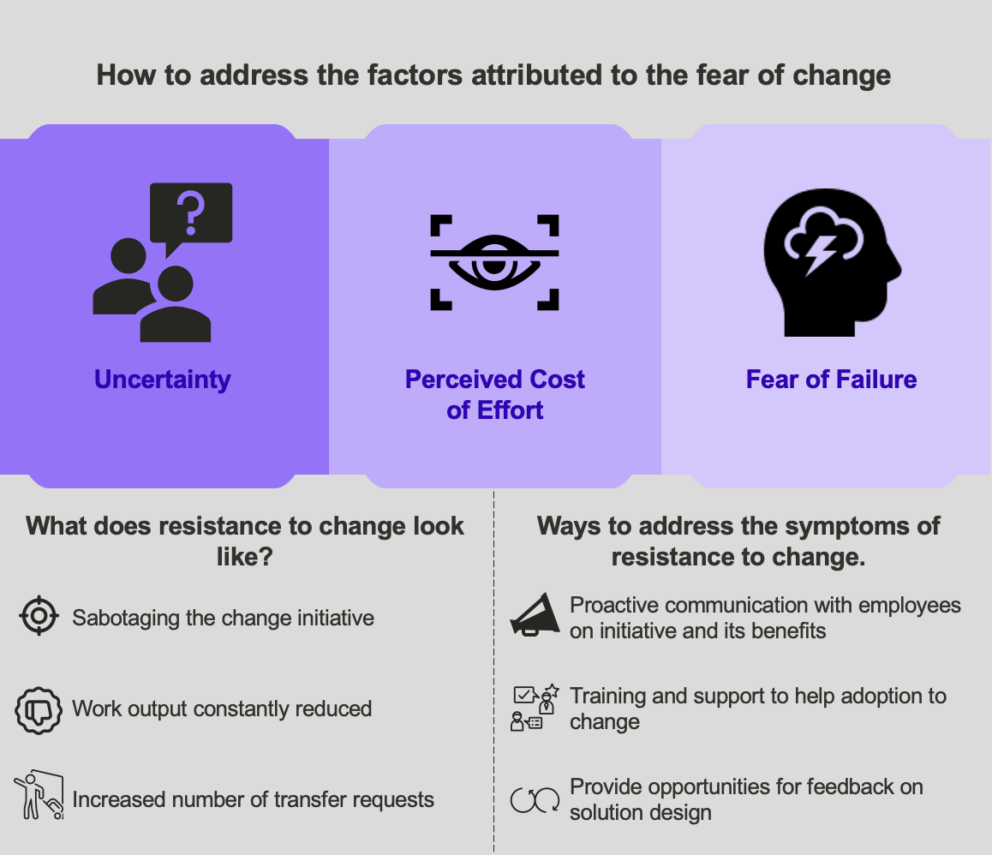Did you know that 47% of businesses report that to survive, they needed to reinvent their business every three years or less? These are the findings from the Reinvention Academy, a US-based think tank. Innovation and change are vital to business success. And in this current fast-paced business environment, where technology and digital evolution are constant, change is an inevitable reality. Organisations have to continuously adapt so they can stay competitive in the face of new technologies, economic shifts and other challenges. But, as we all know, despite the benefits change can bring, people don’t like change and employees often experience fear and resistance when they are confronted with it.
And change resistance is a big problem for organisations. It can cause significant costs and delays and basically acts as an impediment to organisational growth. For instance, a delay in implementing a new technology can result in increased costs, extended implementation periods and missed opportunities such as launching a new product, improving customer satisfaction, or increasing margins.
This fear of change can be attributed to several factors, such as uncertainty, perceived cost of effort and fear of failure. Uncertainty can lead to anxiety amongst employees who may be accustomed to the status quo and are apprehensive about the impact of change on their work and job security. When organisational workflows, structures, and relationships are disrupted, employees might well think that the effort to adapt to the change might be greater than the expected benefits of the change initative. And this can lead to resistance and in some cases, undermining of the change initiative – the change detractor.
And fear of failure can also rear its head when the scale of change is considered too large, requires unfamiliar skillsets or if there is a radical change. This can be daunting for employees as it means them having to step outside their comfort zones.
But all is not lost. And there are measures that can be put in place for organisations to mitigate these fears, reinforce the change and win over detractors. These steps might be providing employees with regular opportunities to retrain, implementing controls to ensure that new systems are used in the correct way, decommissioning legacy systems to ensure employees use new systems and importantly, leaders acknowledging employee concerns and provide opportunities for feedback to alleviate fears and increase acceptance of the change. Ultimately, it’s about building a psychologically safe environment as mapped out by Professor Amy Edmonson in her book ‘The Fearless Organisation’.
And with change management, the proof is invariably in the pudding. Take a blue chip retail organisation Valcon worked with to help deliver a large-scale and highly emotive change. It involved outsourcing and TUPE, impacting 80,000 staff. With the right implementation of our techniques and tools, the transformation was delivered on time, on budget and with limited disruption to business as usual and a successful handover to business operations.
We all know that change is never easy. But it’s a fact of corporate life and there are strategies and approaches you can put in place to ease change and ensure it’s more widely accepted amongst your employee base. Employees are a massively important part of the picture – and are instrumental to the success of your change initiative – so having them on board is vital. Sound change management principles are an essential part of that.

Want to learn more? If you would like to learn more about how Valcon can help your organisation embrace change that is critical for growth and success in today’s dynamic business environment, please email [email protected] and we’ll be in touch right away.













